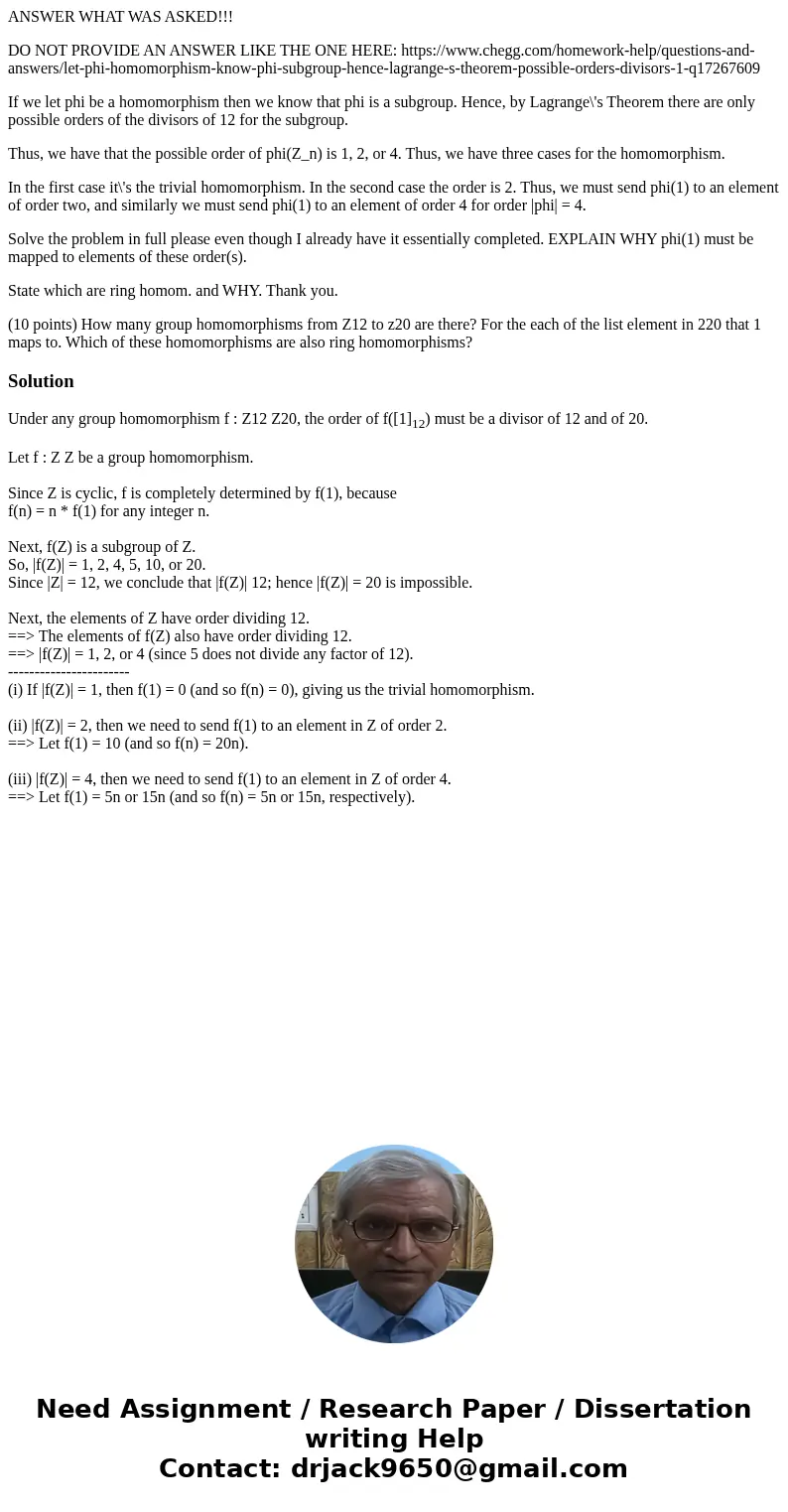ANSWER WHAT WAS ASKED DO NOT PROVIDE AN ANSWER LIKE THE ONE
ANSWER WHAT WAS ASKED!!!
DO NOT PROVIDE AN ANSWER LIKE THE ONE HERE: https://www.chegg.com/homework-help/questions-and-answers/let-phi-homomorphism-know-phi-subgroup-hence-lagrange-s-theorem-possible-orders-divisors-1-q17267609
If we let phi be a homomorphism then we know that phi is a subgroup. Hence, by Lagrange\'s Theorem there are only possible orders of the divisors of 12 for the subgroup.
Thus, we have that the possible order of phi(Z_n) is 1, 2, or 4. Thus, we have three cases for the homomorphism.
In the first case it\'s the trivial homomorphism. In the second case the order is 2. Thus, we must send phi(1) to an element of order two, and similarly we must send phi(1) to an element of order 4 for order |phi| = 4.
Solve the problem in full please even though I already have it essentially completed. EXPLAIN WHY phi(1) must be mapped to elements of these order(s).
State which are ring homom. and WHY. Thank you.
(10 points) How many group homomorphisms from Z12 to z20 are there? For the each of the list element in 220 that 1 maps to. Which of these homomorphisms are also ring homomorphisms?Solution
Under any group homomorphism f : Z12 Z20, the order of f([1]12) must be a divisor of 12 and of 20.
Let f : Z Z be a group homomorphism.
Since Z is cyclic, f is completely determined by f(1), because
f(n) = n * f(1) for any integer n.
Next, f(Z) is a subgroup of Z.
So, |f(Z)| = 1, 2, 4, 5, 10, or 20.
Since |Z| = 12, we conclude that |f(Z)| 12; hence |f(Z)| = 20 is impossible.
Next, the elements of Z have order dividing 12.
==> The elements of f(Z) also have order dividing 12.
==> |f(Z)| = 1, 2, or 4 (since 5 does not divide any factor of 12).
-----------------------
(i) If |f(Z)| = 1, then f(1) = 0 (and so f(n) = 0), giving us the trivial homomorphism.
(ii) |f(Z)| = 2, then we need to send f(1) to an element in Z of order 2.
==> Let f(1) = 10 (and so f(n) = 20n).
(iii) |f(Z)| = 4, then we need to send f(1) to an element in Z of order 4.
==> Let f(1) = 5n or 15n (and so f(n) = 5n or 15n, respectively).

 Homework Sourse
Homework Sourse